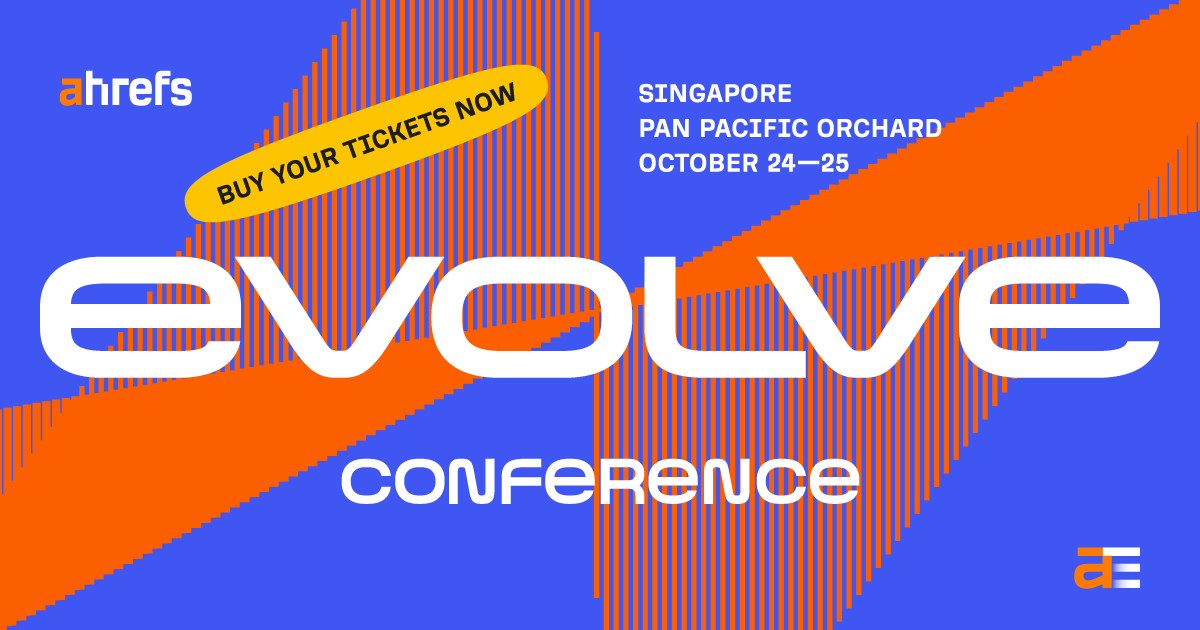SEO
How to Become an SEO Conference Speaker

I asked 11 of SEO’s own headline acts to share their best advice for aspiring speakers.
Here’s their personal roadmap for speaking on the biggest stages, building your personal brand, and even getting flown around the world on someone else’s dollar.
Big dreams often start with small first steps—in this case, hosting webinars and running presentations within your company.
Start little by little with online shorter events first, to longer and then eventually in-person meetups, to later bigger conferences.
Start from in-house presentations where you can present something to your team. It doesn’t even have to be in person. You can just ask people to join a call where you will share your experience with some kind of topic. You will create slides, you will create a presentation, and that will be that. The other thing you can do is give a webinar, which is also public speaking, it’s just not in person—it’s online.
These virtual events allow you to collect social proof for your speaking abilities, making it easier for you to persuade event organizers that you’re a good fit:
Organizers are already going to be familiar with you or they are going to research you online. So, having a strong social media presence, along with articles you’ve written and videos you’ve recorded—including podcasts, webinars, and interviews—goes a long way. Video is key because organizers want to see how you speak and if you can engage an audience.
If you have recordings of yourself speaking, this helps a lot to pitch yourself to organizers because they understand that you did this before. You have experience creating slides, creating coherent presentations, you don’t have stage fright, so you’re not going to fail miserably.
Once you can run a webinar without breaking into too much of a sweat, local meetups are a great next step:
Speaking at local events is a good way to build up your profile in an easier environment. Having a event like SMX as your first speaking gig is more daunting.
As Lily Ray explains, earning your first dose of live audience feedback can be a real confidence booster:
I started with a small meetup in NYC run by Botify, where I spoke on a panel with a few amazing SEOs. I was so nervous! But after hearing some feedback from the audience, that was the moment I realized that I could actually add value to the discussion and people in the room benefitted from hearing what I had to say.
Our CMO Tim views these local meetups as a great way to get reps in and prepare for big stages:
In many cities, there are meetups for 20, 30, or 40 people. Sometimes you can even organize a meetup, invite others, and speak there. It will take you a few years to get there, but once you’ve done some in-house speaking and smaller meetups, and you’ve developed a lot of interesting, unique ideas of your own—not just things you’ve learned from someone else—you can apply to speak at bigger conferences.
When you’re ready for the big time, there’s no real secret to success. You just need to pitch organizers:
Basically, to become a conference speaker, all you need to do is to apply.
I got more gigs by simply pitching event organizers and then sending the organizer a custom note on LinkedIn or via email if I’m connected with them. Don’t be afraid to pitch, get rejected, and then pitch again.
Apply to as many conferences as possible. Research the ones you’re interested in and find out if they have an application process or if they work on an invite-only basis.
Some events are more welcoming of newbie speakers than others, like our beloved brightonSEO:
Some conferences, like brightonSEO, intentionally recruit a certain percentage of new speakers. They have an application process on their website, which I took advantage of when I was starting out.
And speaking of brightonSEO, here’s conference founder Kelvin’s tips for pitching:
Be actionable. Our audience loves practical how-to information. Aim for takeaways like tasks, tools, and books.
Be specific. Specific topics are more likely to be chosen. Detailed titles and descriptions win us over.
Avoid the basics. Our audience is not new to digital marketing. Go beyond general tips and theories.
No self-promotion. Avoid pitches that focus on your tool or client results.
Use research. Relevant and timely data boosts your chances.
Be authoritative. Know your subject inside and out. Show your expertise.
Pitch a tight topic. Our talks are 20 minutes. Narrow topics allow for detailed, focused presentations.
Most of the speakers I asked find their talk topics in the same simple way: their own personal experience.
Speak on topics you know inside and out, where you have a lot of knowledge and opinions, as opposed to trying to speak about things that might be outside your wheelhouse but you feel are important to cover. The more you share things you actually know, the more natural and engaging the talk will come across to the audience.
I also recommend sticking to areas of SEO/ digital you are most comfortable with and have deep subject matter experience. Don’t try and speak about something you’re not an expert in.
And if you’re worried that you don’t have any useful experience—you’d be wrong.
My journey into speaking started with the simple thought that if I could teach people about what I knew surrounding digital marketing, companies and people would eventually pay me to do the things that I was talking about.
Speaking is about sharing what you see to be useful from your own day to day, whatever your experience is! There will be always someone who will find it useful, since it will be another perspective from real experience.
Public speaking is a skill like any other, something that can be improved and developed. Many of SEO’s biggest names still make time to practice, via training, studying famous speakers, or just simply workshopping their presentations out loud:
I highly recommend doing speaker training. You can pick up some great tactics to make your speaking better. I paid for speaker training from my team with the organiser of Ted X, and it was extremely valuable.
Limit the desire to study marketing speakers for inspiration. Instead, study the greatest orators and comedians of all time to better understand how to tell a story that captivates and hooks an audience.
Practice your full talk out loud at least once before you present. This is probably the number one most important rule I’ve learned as a speaker – you need to formulate the sentences out loud a few times for the talk to become muscle memory.
Want to learn from the best speakers in the world?
There’s a Ryan Holiday quote about writing that I regularly share with my team, and it applies equally here: if you want to be a good speaker, “go do interesting things.”
You don’t have to be a world-class orator if you share an interesting idea and jump straight to the good stuff.
Having something interesting to say is critical, in my opinion. I go to lots of conferences where speakers talk about topics that have already been covered many times or that the audience could look up on the internet. But presenting something fresh and interesting is hard. That’s where the value is!
Typically, people want to hear unique information. This is not something you’ve heard before that you want to share on stage, but something you figured out yourself. So, years of experience definitely contribute to your ability to become a speaker.
Never waste time on an introduction. So many speakers waste 5 minutes at the start of their presentation explaining who they are and why they’re important. No one cares. Everyone can Google that information or read your bio in the pamphlet for the event. Get to the good stuff. Deliver value immediately or capture the audience’s attention with something bold.
With a few talks under your belt, you want to think about “niching down”, and focusing your topics on a particular topic or style. As Cyrus explains:
Remember that organizers need to cover a diverse set of topics, so having a “niche” can work in your favor.
Lazarina Stoy has great ideas for finding a niche that feels right for you:
Choose a topic or even talk format that is unique to you. You could do this by doing an ‘audit’ of your processes and compare/contrasting to others.
You could do this by analysis, research, and insights from events (think Lily Ray’s Winners and Losers from Algorithm Updates series).
You could do this by giving an old process a revamp by incorporating new technology or new data to enhance the insights.
You could do this by showing how a process is different in your niche (e.g. on-page SEO for Healthcare).
The opportunities are endless!
The more people you connect with and talk to, the greater the odds that lucky, serendipitous opportunities will present themselves to you. As Andy Chadwick explains:
I landed my first conference speaking opportunity through effective networking at the conferences I attended. I made sure to let the right people know that I was interested in public speaking. When other conferences began seeking recommendations for speakers, those connections recommended me.
Bernard Huang is proactive about understanding and addressing the needs of everyone involved in speaking—organizers, other speakers, and your audience:
“If you do become a conference speaker… you now have 3 bosses to please:
1. The conference organizer—your ability to communicate and coordinate with them on deadlines, topics, reimbursements will be remembered.
2. The audience—what will lead to more potential presentations is your ability to deliver meaningful and relevant information to the audience. Present what you know and understand, but make sure you present in a relatable manner, depending on attendees.
3. Other speakers—a hidden benefit of becoming a speaker is the VIP events that you get to attend. You may initially feel imposter syndrome (I know I still do) at these networking events but make sure to play it cool and see how you can help your fellow speakers. This will go a long way since speakers oftentimes get asked to recommend other speakers for future events.
Final thoughts
This should provide a decent roadmap for working your way onto the biggest stages in the SEO industry. With the practical stuff out of the way, I’ll turn the inspirational final thoughts over to Lazarina:
Even if you just motivate someone else by stepping on the podium or by saying something they needed to hear, that’s a win! So, don’t be afraid to give it a go—we’re all rooting for you.
























